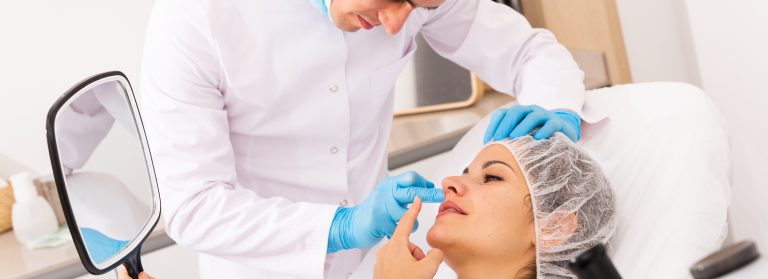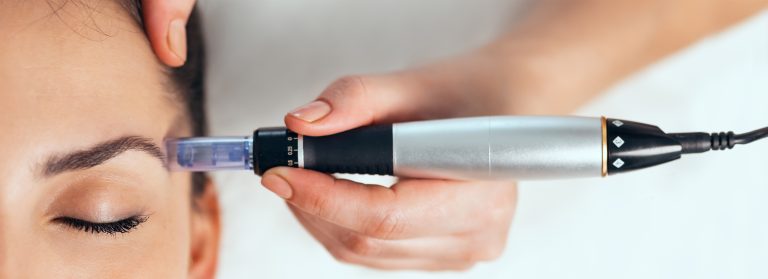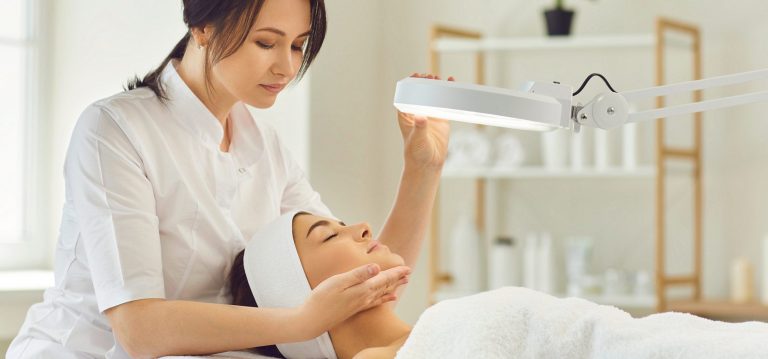What are Chemical peels?
Chemical peels also referred to as chemexfoliation or derma peeling are used to assist with reducing the signs of ageing on the face, neck, chest, décolletage and hands. The aim is to improve the appearance of the skin for brighter, smoother and younger-looking skin with an evener skin tone.
It can also assist with treating some skin conditions of acne and pigmentation. Chemical peels are considered to be cosmetic treatments. They remove dead skin cells, stimulating the growth of new cells.
Peels can have benefits for anti-ageing:
- Reducing fine lines and wrinkles
- Brighter complexion
- Smoother skin
- More even skin colour and improved tone
Chemical peels are often used to address:
- Dull skin
- Discoloured skin complexion
- Fine lines and wrinkles
- The skin has a rough texture
- Skin tone is uneven
- Some types of acne
- Spots from ageing
- Sun-damaged skin
Getting effective results depends on the skill of the skin professional conducting the treatment, their depth of knowledge about skin and correct application of the peel. Before doing any peel treatments, ensure that your clinic does a skin assessment to determine what is appropriate and best for you.
Types of Peels
Chemical peels are categorised into 3 types according to the depth of skin that the peel stimulates:
Superficial
These peels remove skin cells from the top layer of skin also called the epidermis. Superficial peels require regular courses of treatment to maintain the improvements and results.
Medium
Medium peels remove skin cells from the top and middle layers of skin. Depending on the peel and advice of your clinic, treatments are usually repeated every 6 to 12 months to maintain the effects and benefits.
Deep
Deep peels work on the deeper layers of skin and have longer downtimes and healing time. The results last longer than superficial and medium peels and are often not required to be repeated.
There are many different peel products with various combinations of ingredients within each peel type. The downtime is generally longer with deep peels. Ask your clinic what the downtime for your treatment would be.
One needs to also consider skin healing time which ranges from a few days to about three weeks. Some superficial peels have minimal or no downtime. Plan ahead before scheduling your appointment should you have an event or important occasion to attend.
Pre-Treatment Skincare
Enquire with your clinic about pre-treatment instructions to prepare your skin ahead of your peel treatment. You might have to stop using certain skincare products such as retinol for a period before your appointment.
Sun exposure should be avoided particularly for the week before your treatment. Sunburned or recently tanned skin should not be peeled. Enquire with your doctor about going for a chemical peel especially if you are using any medications or undergoing any medical treatments. Peels are not recommended during pregnancy. It is advisable to avoid waxing before a chemical peel since the waxed area could be too sensitive.
Post Treatment Skincare
Some peels have little to no downtime. The skin can become red and sensitive for a while followed by scaling which can last a few days. As your skin will be highly sensitive to the sun, ensure you apply a broad-spectrum SPF sunscreen daily. Lotions and creams are recommended by your clinic for aftercare while the skin heals. If you wear make-up, ask your skin professional when it can be applied following treatment.
Keep the skin hydrated with a moisturiser and steer away from tanning beds and other indoor tanning facilities. It affects the healing of your skin.
One usually sees visible results when the skin heals. The results will not be permanent as the skin continues to change and age. For superficial and medium peels, a course of treatments over time is more effective than a single peel to see the desired results.






